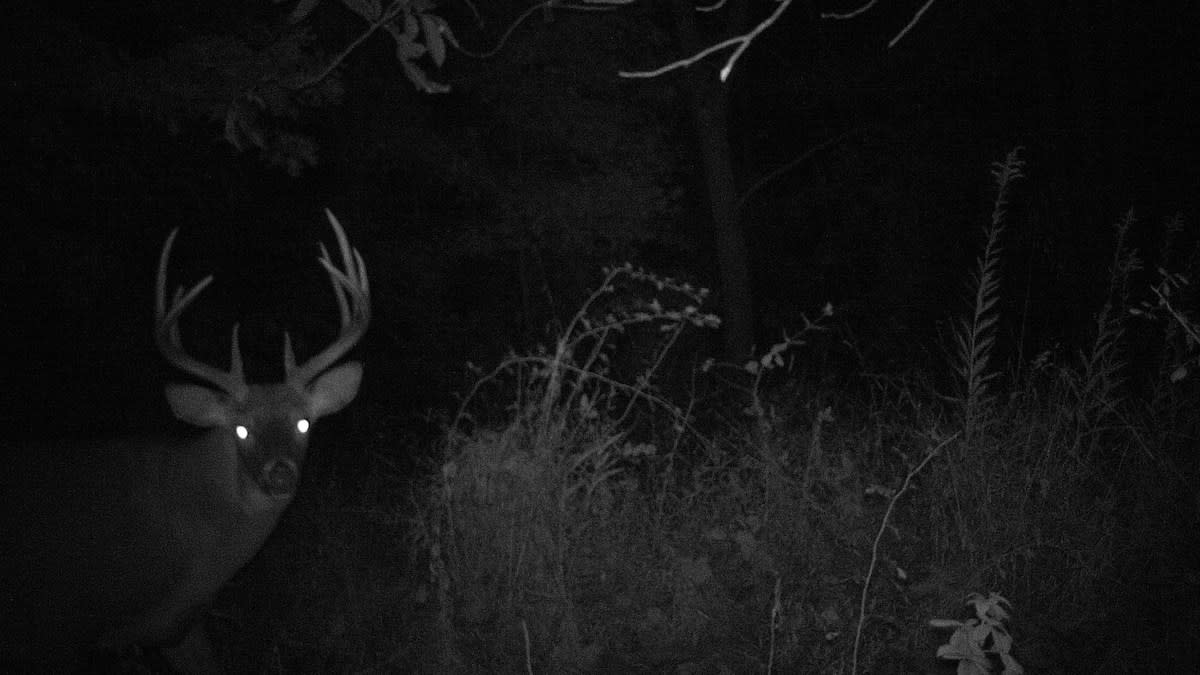
Bill Winke is an authority on nocturnal bucks and using trail cameras to understand how killable a deer is. Winke divulges how he determines whether or not to hunt a buck, how he uses trail cameras to scout deer, and how camera pictures help him determine whether a deer is killable or not.
Winke doesn’t hunt bucks that only show on camera after dark: “You need to know what bucks are nocturnal, which ones are mostly nocturnal and which ones often travel by day. Obviously, the daytime travelers are the ones we want to see. Don’t be duped into thinking you can hunt an area where a strictly nocturnal buck is living and somehow he will move during daylight just to oblige you. I have fallen for that temptation too many times. I won’t let it happen again. All I did in those cases was needlessly over-hunt the buck’s core area at a time when he was not vulnerable. The risk of educating him was much higher than the possible reward of shooting him. My goal now is to keep looking at photos while waiting for that buck to start moving during the day. In the mean-time, I am hunting other bucks elsewhere–bucks that have personalities that cause them to move more during the day.”
Winke on the importance of daylight photos: “Just because you are only getting night time photos does not mean you can’t kill the buck. You can’t make that conclusion. But if you are getting daylight photos the odds of an encounter while hunting are much, much higher, in my experience. I am comfortable drawing that conclusion. So the question is: do you want to hunt bucks that you might be able to kill but the odds are against you or do you want to hunt bucks you are likely to encounter? I know very well, again from experience, which ones are more fun to hunt. We have really seen this over and over during the past few years. The ones we get the daylight photos of are the ones we end up encountering often from the stand. So now I want to see daylight photos (or at least photos near daylight) before I hunt a buck. As you say, the key is to have enough camera coverage to feel comfortable that you are in or close to the buck’s core area. If you are getting regular photos, you know you are in or close to this area. If you are only getting scattered photos and all at night, it is hard to draw conclusions. In that case, you need to move the camera a bit in the direction the buck is coming from when he approaches the camera in the evening and see if you can get more shots of him at night (or better yet a few in daylight).”
Winke on patterning bucks from daylight photos: “You just have to be careful not to push too hard in your quest for daylight photos or you may bump him. To keep from doing that, stick to the fringes and edges of open areas, forget the creek crossings deep in the cover. If you have to go that deep to get daylight pictures you are running too much risk. In that case, I would rather look at the time the buck is reaching the camera and what direction he is approaching from when he offers the first picture and make a few assumptions from there. If he is getting to the camera shortly after legal shooting time and is coming from the direction of thick ridge, I may try to slip in that direction to a good funnel and try to catch him shortly after he starts to move. Patterning them this closely works best up until about November 3 or so and then they start to move over bigger areas and abandon their normal patterns."
If they are daylight movers, they will tend to continue to be daylight movers even after the rut starts, but they may be ranging wider or even in a different area. If they tend to be nocturnal bucks (some are simply by personality) then they will likely keep this tendency during the rut too. If you do find yourself hunting a nocturnal buck, it seems that the best chances for seeing him are when the first doe in his core area comes into estrous (can be anywhere from late October through about November 7) and again during the late season if you have good food plots.
To summarize, ideally, the best photos you can get are during the day. Next best is just after legal shooting time in the evening or just before in the morning. Then you can make a few educated guesses about where you might be able to cut him off deeper in the cover, but I personally would not run the camera in the deeper ambush. I would sit there with my bow in hand when the wind is right and hope for the best.
There are a lot of what ifs in this strategy, but most deer strategies are kind of like that. You have a general plan and then stay flexible enough to adjust it to fit the personality of the bucks you are hunting.”







Conversation